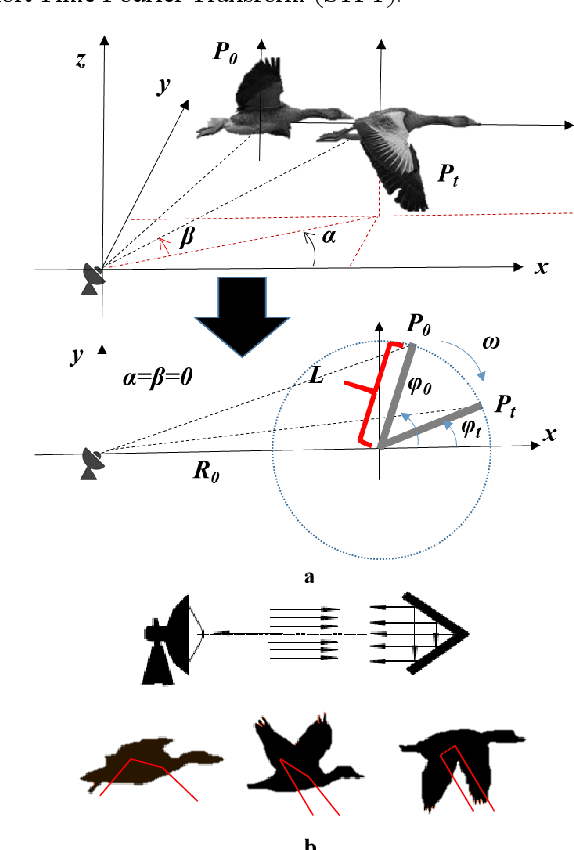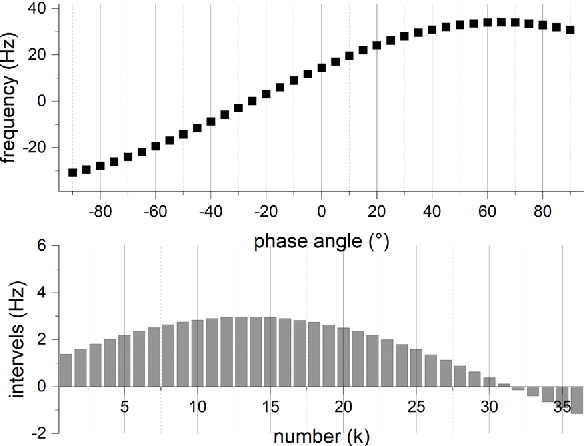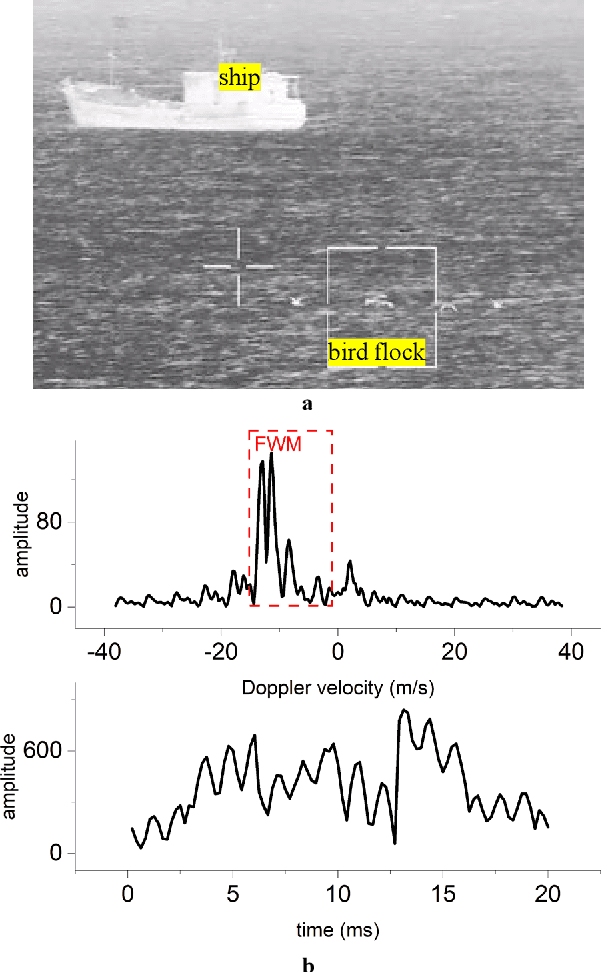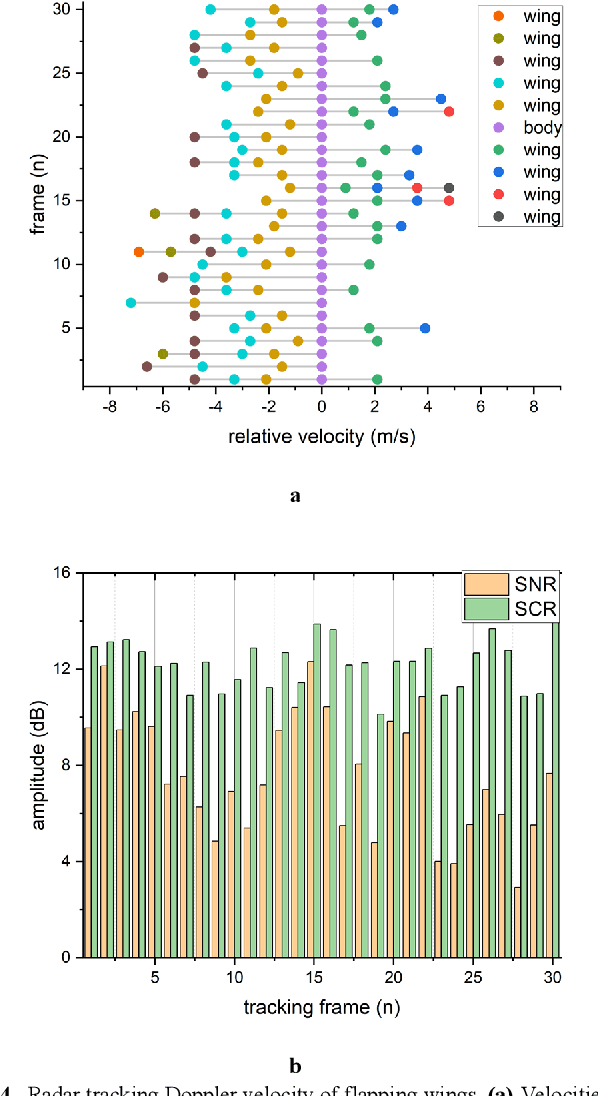Deyong Kong
Radar detection of wake vortex behind the aircraft: the detection range problem
Dec 27, 2023Abstract:In this study, we showcased the detection of the wake vortex produced by a medium aircraft at distances exceeding 10 km using an X-band pulse-Doppler radar. We analyzed radar signals within the range profiles behind a Boeing 737 aircraft on February 7, 2021, within the airspace of the Runway Protection Zone (RPZ) at Tianhe Airport, Wuhan, China. The findings revealed that the wake vortex extended up to 6 km from the aircraft, which is 10 km from the radar, displaying distinct stages characterized by scattering patterns and Doppler signatures. Despite the wake vortex exhibiting a scattering power approximately 10 dB lower than that of the aircraft, its Doppler Signal-to-Clutter Ratio (DSCR) values were only 5 dB lower, indicating a notably strong scattering power within a single radar bin. Additionally, certain radar parameters proved inconsistent in the stable detection and tracking of wake vortex, aligning with our earlier concept of cognitive micro-Doppler radar.
An introduction to radar Automatic Target Recognition (ATR) technology in ground-based radar systems
Oct 23, 2023Abstract:This paper presents a brief examination of Automatic Target Recognition (ATR) technology within ground-based radar systems. It offers a lucid comprehension of the ATR concept, delves into its historical milestones, and categorizes ATR methods according to different scattering regions. By incorporating ATR solutions into radar systems, this study demonstrates the expansion of radar detection ranges and the enhancement of tracking capabilities, leading to superior situational awareness. Drawing insights from the Russo-Ukrainian War, the paper highlights three pressing radar applications that urgently necessitate ATR technology: detecting stealth aircraft, countering small drones, and implementing anti-jamming measures. Anticipating the next wave of radar ATR research, the study predicts a surge in cognitive radar and machine learning (ML)-driven algorithms. These emerging methodologies aspire to confront challenges associated with system adaptation, real-time recognition, and environmental adaptability. Ultimately, ATR stands poised to revolutionize conventional radar systems, ushering in an era of 4D sensing capabilities.
Formation Wing-Beat Modulation : A Tool for Quantifying Bird Flocks Using Radar Micro-Doppler Signals
Sep 27, 2023



Abstract:Radar echoes from bird flocks contain modulation signals, which we find are produced by the flapping gaits of birds in the flock, resulting in a group of spectral peaks with similar amplitudes spaced at a specific interval. We call this the formation wing-beat modulation (FWM) effect. FWM signals are micro-Doppler modulated by flapping wings and are related to the bird number, wing-beat frequency, and flight phasing strategy. Our X-band radar data show that FWM signals exist in radar signals of a seagull flock, providing tools for quantifying the bird number and estimating the mean wingbeat rate of birds. This new finding could aid in research on the quantification of bird migration numbers and estimation of bird flight behavior in radar ornithology and aero-ecology.
Introduction to Drone Detection Radar with Emphasis on Automatic Target Recognition (ATR) technology
Jul 19, 2023Abstract:This paper discusses the challenges of detecting and categorizing small drones with radar automatic target recognition (ATR) technology. The authors suggest integrating ATR capabilities into drone detection radar systems to improve performance and manage emerging threats. The study focuses primarily on drones in Group 1 and 2. The paper highlights the need to consider kinetic features and signal signatures, such as micro-Doppler, in ATR techniques to efficiently recognize small drones. The authors also present a comprehensive drone detection radar system design that balances detection and tracking requirements, incorporating parameter adjustment based on scattering region theory. They offer an example of a performance improvement achieved using feedback and situational awareness mechanisms with the integrated ATR capabilities. Furthermore, the paper examines challenges related to one-way attack drones and explores the potential of cognitive radar as a solution. The integration of ATR capabilities transforms a 3D radar system into a 4D radar system, resulting in improved drone detection performance. These advancements are useful in military, civilian, and commercial applications, and ongoing research and development efforts are essential to keep radar systems effective and ready to detect, track, and respond to emerging threats.
 Add to Chrome
Add to Chrome Add to Firefox
Add to Firefox Add to Edge
Add to Edge